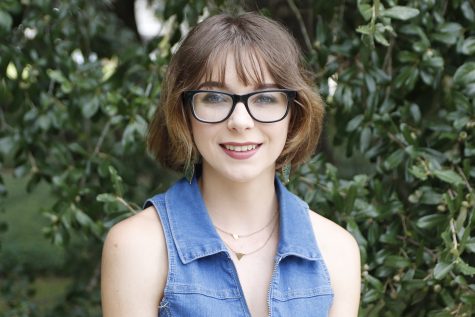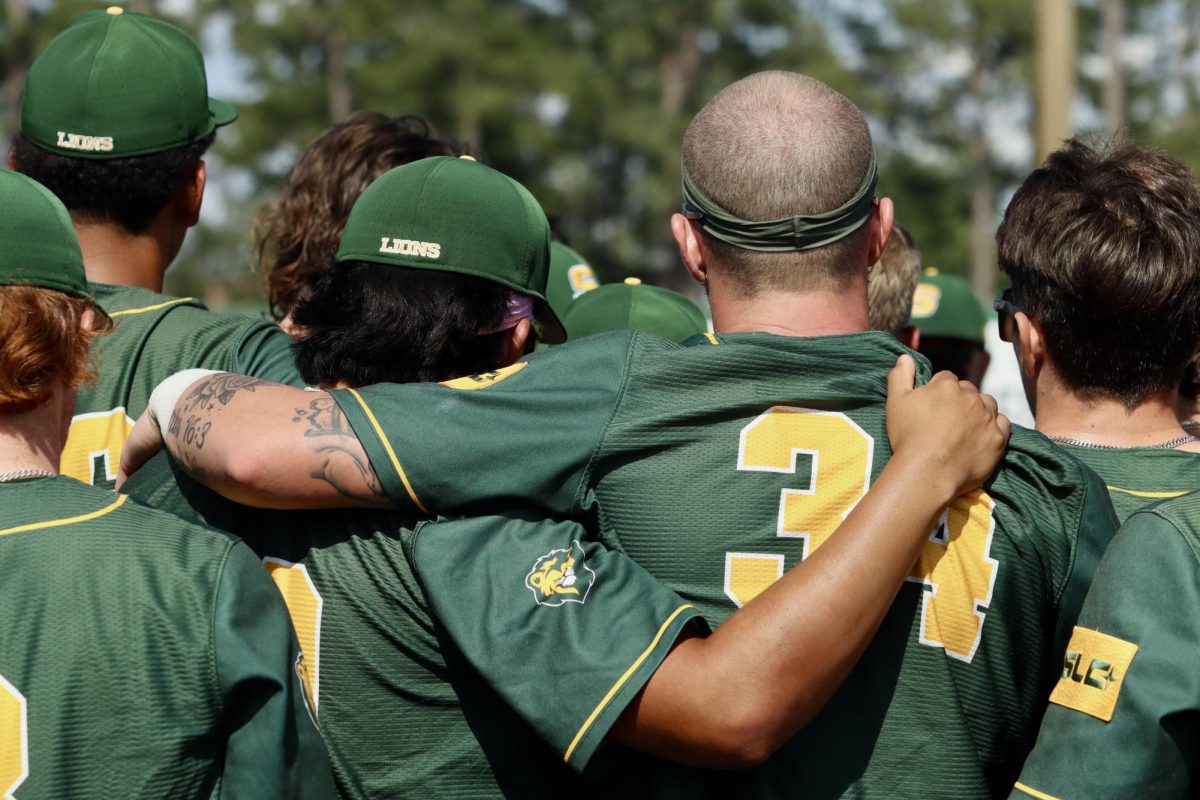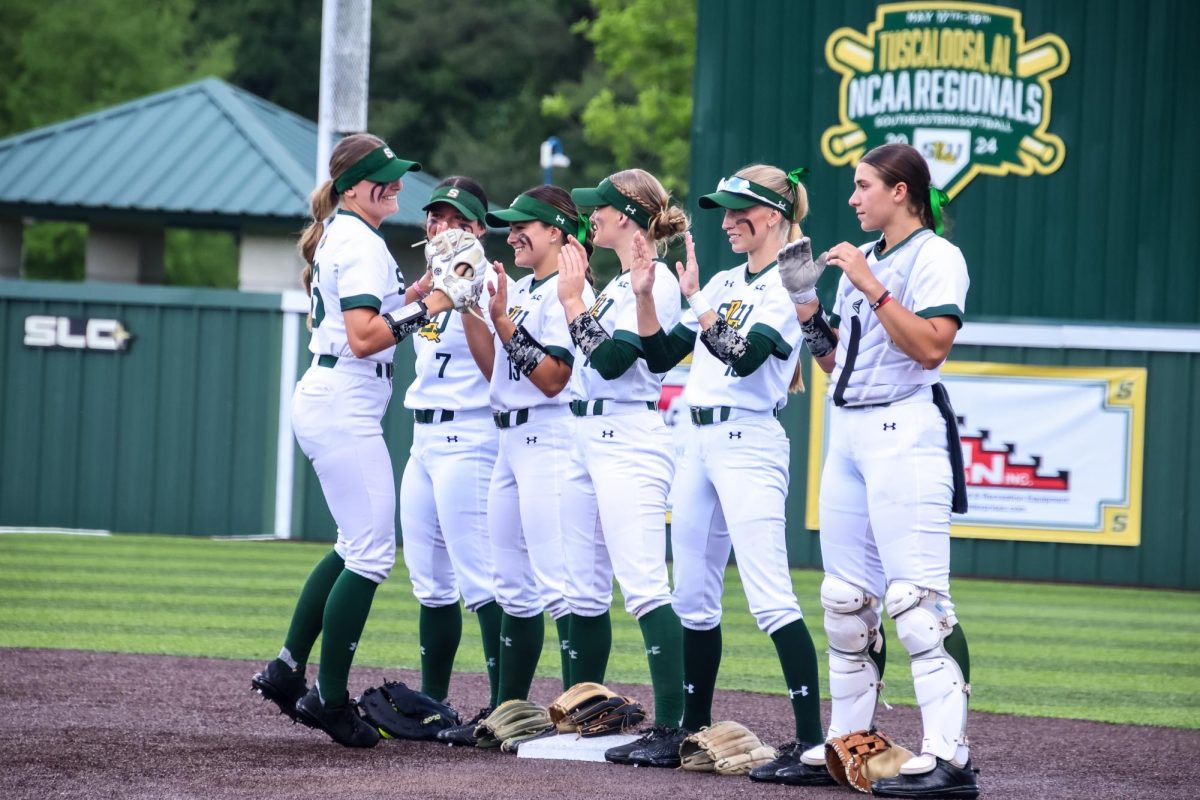
Last April, the School of Nursing hosted the university’s first American Foundation for Suicide Prevention “Out of the Darkness” Campus Walk to bring awareness to suicide and mental health on campus. This year, instructor of mathematics Sarah Clifton and Instructor of History and Political Science Lori Ostarly-Ulfers are heading the walk that will include participation from multiple organizations and community members. File Photo/The Lion’s Roar
For the second year, a suicide walk, known as “Out of the Darkness,” will be held on campus for individuals who have experienced the effects of suicide in any way or would like to show support for the cause. The walk is being headed by Instructor of Mathematics Sarah Clifton and Instructor of History and Political Science Lori Ostarly-Ulfers.
“It is a walk to raise awareness for suicide prevention,” said Clifton. “We have a very high rate of suicide in college-aged students, especially in St. Tammany Parish. So, this walk is very important. It also works as a real nice way of helping people who have been through it. It’s kind of a healing thing for them as well, to meet other people who have gone through what they’ve gone through.”
The walk is scheduled to be held on Saturday, April 21 from 9-11 a.m. with check-in starting at 8 a.m. In the past, Instructor of Nursing Mitzie Meyers organized the walk. This year she has been preparing Clifton for the job.
“It started last year on campus with Mitzie Meyers, who is still very instrumental in getting this walk going,” said Clifton. “She’s been leading me through the process. She felt strongly that this needed to be on campus. We felt that it was very important that we keep the tradition going. It’s very important to raise awareness. That’s why we’re doing this a second year. We’d like to make this an annual event. We feel that strongly about the cause.”
Clifton’s personal experiences with suicide in her past inspired her to speak out on the issue.
“I lost my father to suicide when I was much younger,” said Clifton. “I’ve had other family members who have done that. I’ve also met a lot of students who have come into my office and told me that they’ve had that. So, I feel like there’s a lot of people out there who need to hear and walk.”
Clifton noted the correlation of mental illness and suicide and the stigma associated with them.
“Mental illness is a huge factor right now on college campus, and suicide is often a byproduct unfortunately,” said Clifton. “A lot of students don’t feel that there’s a lot of help. Back when I was younger, there was a lot of stigma attached to suicide, negative. You didn’t talk about it. When I first moved here, I lied. People asked me how I lost my father, and I said, ‘He was sick, and he just died.’ I was very vague about it because there was such a stigma attached to it.”
However, Clifton feels the stigma has begun to alleviate in recent years as shown by the possibility of hosting a walk.
“Now, people can talk about it,” said Clifton. “They’re walks. We can raise awareness, and we can let people know. First off, there are alternatives to suicide, and secondly, there are people who understand and have been through it.”
Clifton has high hopes for the walk and how it may potentially affect participants.
“I hope it raises awareness, and I hope it helps heal some who have been through it and have lost somebody through that way,” said Clifton. “There’s going to be a lot of mental health resources out there that day. There will be pamphlets, brochures, numbers to call. There’s all kinds of things that weren’t there 20-some-odd years ago for students.”
To get involved with the walk, contact Clifton via email or their website.
“If they want to participate in the on-campus walk, we are always in need of volunteers,” said Clifton. “They can email me at my email address sarah.clifton@selu.edu. They can sign up at the website, which is afsp.org/southeastern.”
Ostarly-Ulfers recently spent time looking at some suicide statistics and was harrowed at her findings.
“What I had read is that 1100 college students a year commit suicide,” said Ostarly-Ulfers. “That is the second leading cause of death of young men of college age, 19 to 24. It’s staggering.”
Ostarly-Ulfers found herself concerned for her daughter, who will be entering college soon, as she noted the suicidal habits of college students, especially those of more expensive institutions.
“From what I read, one out of 13 students makes a suicide plan at some point,” said Ostarly-Ulfers. “At some point, it will pop into their head that it would be easier.”
Before getting involved with this walk, Clifton found herself facing the burden of suicide within her classrooms.
“In one semester alone, I had one student on suicide watch, one who had attempted,” said Clifton. “I have a letter where one student had gone and got help and thanked me later. It’s different now than it was 20 years ago because young people struggle so much more than we used to.”







